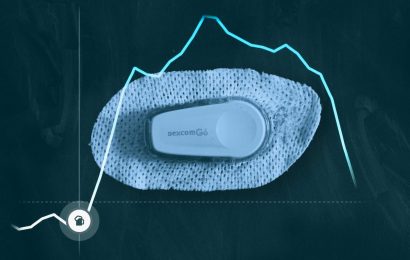Robbie Freeman, vice president of clinical innovation at New York’s Mount Sinai Health System began his career working at the bedside, so he has an intimate appreciation of the real-world value of patient safety projects – and importance of ensuring key data is gathered and made actionable with optimal workflows.
“I’m a registered nurse, and I think working with patients and spending a lot of time on data entry is what kind of led us to this real focus on clinical workflows and delivering additional value,” said Freeman, speaking Wednesday at the HIMSS Machine Learning & AI for Healthcare Digital Summit about some of Mount Sinai’s recent automation initiatives.
In an earlier, pre-digital age, many of the flow sheets and assessments collected during a nursing assessment, or other clinical information entered into the chart, might not have been “used or even necessarily looked at,” he said.
But in recent years, “they’ve become very valuable in the world of predictive analytics. There’s a lot of information in those flow sheets that we can tap into for these models.”
Mount Sinai has made data science and machine learning central to its mission, embedding algorithms into a wide array of dozens of hospital operations and clinical workflows – targeting an evolving array of specific use cases and scaling them up across the enterprise to improve quality, safety, efficiency and experience.
“We wanted to make sure that we created a data model that makes sense for us,” said Freeman. “And in particular, we want to tap into our real-time data streams and not have to depend on downstream data that’s administrative or archived. We wanted to tap into it at the source.
“We also wanted to make sure we build something that’s scalable,” he added. “And we knew there had to be a focus on clinical workflows, because we want to be able to give information to our frontline team right at the point of care, and not have them log into another system or have a clunky workflow. We wanted to make it as seamless as possible to ensure there is success for these initiatives.”
Mount Sinai built a clinical data science platform that taps into the health system’s interface engine, “which receives HL7 messages from all of our data producers so that our labs, pharmacy, devices, EKG’s – all of this data comes across the interface data from our EMR, Epic,” he explained, “a lot of those data channels that were existing, and we tapped into that.”
As for infrastructure, “We are using a lot of off the shelf open source technology like Apache Spark,” said Freeman. “We have a data link that’s run on MongoDB, and so we run these models on Spark. We come up with some sort of predictive score in most cases, and then we interface that information back into the point of care. So in most cases our teams are seeing this right in the EMR. They don’t have to leave any screens.”
Other modes of communication included secure text (“We’re using Epic apps, like Haiku”) and voice tools from Vocera used by nurses and other clinicians.
“In each case, we try and get information back,” said Freeman. “That way we can understand how we’re doing and how the models are working.”
As for use-focused cases, “We have a growing portfolio of products – more than 30 initiatives running across six hospitals, with many in production,” he said.
These focus on everything from malnutrition to discharge planning, fall prevention to patient experience.
“We have a model to identify patients who become delirious, and then they’re seen by our delirium team physician or nurse practitioners,” Freeman said. “We’re doing some work on ventilator reading and clinical deterioration. We just started with a number of outpatient projects, so our team focused primarily on inpatient workflows initially, and we’re branching out to the outpatient world.”
And as COVID-19 causes capacity challenges at Mount Sinai hospitals, the algorithms around discharge are useful for freeing up space as quickly as possible.
“Oftentimes, our patients are ready for discharge and we’re not,” he said. “There are things that we still have to do, like set them up with skilled nursing or get some sort of insurance verification.
“So we’re trying to predict 48 hours in advance who is likely to go home, so we can remove those barriers: Once the patients are medically ready to leave, we can get them out officially.
“That creates more capacity,” said Freeman. “It allows us to help more patients and allows us to work more efficiently.”
Twitter: @MikeMiliardHITN
Email the writer: [email protected]
Healthcare IT News is a HIMSS publication.
Source: Read Full Article


